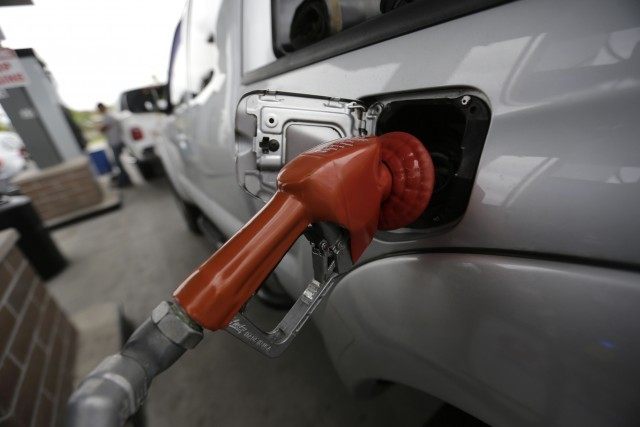That the Senate Homeland Security and Government Affairs Committee attacks the Environmental Protection Agency’s (EPA) management—er, mismanagement—of the federal renewable fuel standard (RFS) indicates the growing frustration over both the agency and the RFS itself.
At the June 18 hearing, senators from both sides of the aisle grilled Janet McCabe, the EPA’s acting assistant administrator. Senator James Lankford (R-OK), who chaired the Subcommittee on Regulatory Affairs and Federal Management, opened the hearing by calling the RFS “unworkable in its current form.” In her comments, Senator Heidi Heitkamp (D-ND) claimed that the EPA’s management of the RFS ignored “congressional intent,” while creating “uncertainty” and costing “investment.”
The RFS has been under fire from all sides. It is the product of a different energy era—one in which presumed scarcity was the norm and reducing greenhouse gases was the concern. As a solution to both problems, Congress passed the Energy Policy Act in 2005, which established the first renewable-fuel volume mandate. Two years later, through the Energy Independence and Security Act, Congress expanded the RFS program, requiring 36 billion gallons of renewable fuel be blended into gasoline and diesel by 2022 (annual targets were outlined).
When the 2014, 2015, and 2016 proposed volumes were released—in the middle of 2015—almost no one was happy. It reduced the amount of corn-based ethanol blended into gasoline, while slightly increasing the share of biofuels.
One day before the Subcommittee on Regulatory Affairs and Federal Management hearing on “Re-examining EPA’s Management of the RFS Program,” the American Petroleum Institute held a press call in which an unlikely coalition of RFS opponents—the American Motorcyclist Association, the Environmental Working Group, and the National Council of Chain Restaurants— sounded optimistic that 2015 is the year for RFS reform. The Environmental Working Group says the RFS has led to more greenhouse gas emissions. The leading chain restaurant trade group, the National Council of Chain Restaurants, opposes to the RFS because of its alleged effect on food commodity prices.
Corn growers aren’t happy with the EPA’s new proposed corn ethanol volumes—covering 2014-2016—that are well below the benchmarks established by Congress. NPR’s Ari Shapiro, in a June 10 Morning Edition broadcast, stated: “Farmers in the Midwest have made good money growing corn for ethanol. To do that, they’ve plowed up lots of grassland. And that cancels out much of the hope for carbon savings. While the EPA still supports ethanol, it wants to take some of the focus off corn, and put it back on greener ways of making ethanol.”
One of the problems with the 2007 targets is that they are based on an assumption of increased fuel usage and require ever-increasing “volumes,” or gallons, of ethanol be produced rather than a percentage of ethanol being blended into gasoline. The combination of more fuel-efficient vehicles, the economic downturn, and an aging population has contributed to “lower gasoline use than projected.”
While EPA’s newly released renewable-fuel volumes don’t meet the law’s target of 22.25 billion gallons for 2016, they do increase year after year—with the 2016 target being an increase over current use. Increasing targets may encourage the renewable fuels industry. They are, however, unrealistic and, as the June 18 hearing revealed, are expected to be “reset.”
In pressing McCabe on the RFS and the consistently missed deadlines, Lankford asked: “How does RFS get back on schedule? Or, has Congress put a requirement on EPA that it can’t fulfill?” McCabe promised they were working on it and offered some vague explanations. He then asked: “I assume you would agree there’s no chance we will hit the target for 2017 based on the statute required for 2017, so we’ll have to reset it…unless there is a tremendous amount of cellulosic ethanol that comes on board.” Lankford discussed the way the law was written to decrease corn ethanol use and increase cellulosic fuel, which he pointed out isn’t “possible based on production.” McCabe agreed that the cellulosic number would need to be decreased by at least 50 percent.
Later in the hearing, Lankford called cellulosic fuels “great in theory,” but acknowledged, “No one has been able to make it in a quantity that is affordable yet.” He alluded to the fact that the cellulosic industry has struggled—with the largest manufacturer of cellulosic product going bankrupt. He said: “No one can seem to crack the code to be able to make this in a way that’s actually affordable.”
Others support Lankford’s view. On the June 10 NPR broadcast, Rob Mitchell, a researcher for the U.S. Department of Agriculture who studies how to make switchgrass grow for cellulosic ethanol, acknowledged: “We’re not producing any ethanol from switchgrass at this point on a large scale.”
Clearly, to reference Lankford, the RFS is a program, created by Congress in 2005/2007, that can’t be fulfilled. No wonder it has so many who see the EPA’s failures as proof that 2015 is the year for RFS reform. Senator Jim Inhofe (R-OK), chairman of the Environment and Public Works Committee says: “The mandate is in need of significant reform and oversight.”
Maybe, just, maybe, 2015 will be the year it happens.
The author of Energy Freedom, Marita Noon serves as the executive director for Energy Makes America Great Inc. and the companion educational organization, the Citizens’ Alliance for Responsible Energy (CARE). She hosts a weekly radio program: America’s Voice for Energy—which expands on the content of her weekly column.

COMMENTS
Please let us know if you're having issues with commenting.